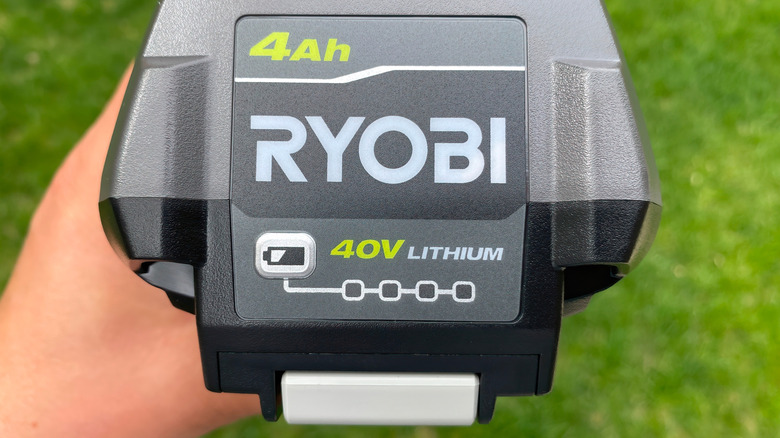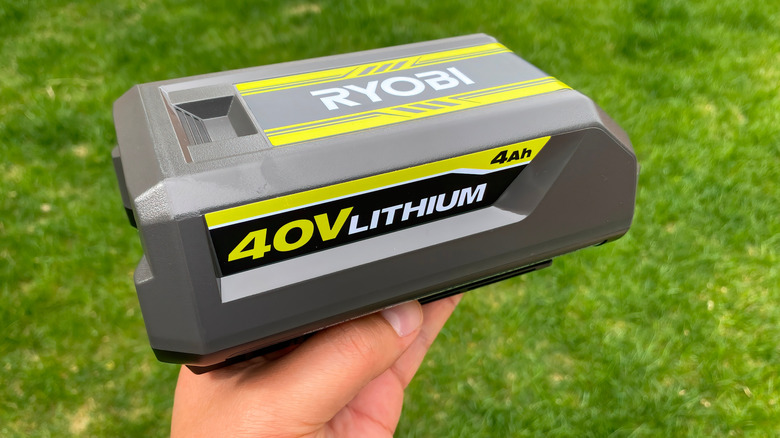Ryobi Battery Stuck In A Tool? Here's How To Remove It
Fully discharging your Ryobi battery isn't a good idea, but you could inadvertently do so, especially after working all day on the job. Swapping it out should be a fairly easy process, but they can be hard to remove and seem stuck. Thankfully, there's a way around it: if it's a 40V battery, you'll find a latch on the bottom that releases it. However, it sometimes isn't quite so straightforward.
For example, if you're using a Ryobi chainsaw, you'll want to set the tool onto a flat surface. Instead of pressing the battery latch on the back edge, run your fingers forward underneath the battery, and press in from the front of the latch. Hold the button in after it clicks, and pull the battery out. It's the same process for larger tools, like Ryobi's most powerful leaf blower, though you might need a little extra leverage. Place the blower on the floor, anchor it with your foot so it doesn't move, slide under the release from the front, click, and pull. To remove the battery from its charger, follow the same steps, and it should release.
The key is that "stuck" doesn't necessarily mean damaged, but if you're not careful, that's exactly what you could do. You could also void any warranty you have. So if the battery just won't come out, don't grab a tool to pry it out. Check your owner's manual first and, if all else fails, take your tool to a trusted local retailer that sells Ryobi equipment.
Important tips for Ryobi battery safety
It's important to take the proper precautions with Ryobi power tool batteries, as lithium-ion batteries can be dangerous if mishandled. Batteries are always in a "live" state, even when not in a tool or attached to a charger. Thus, you should never store them in hot temperatures or expose them to an open flame. Doing so can cause the battery to swell, and possibly even explode.
You should also keep the batteries away from metal objects, as they can short-circuit the battery if they bridge its terminals. Always remove your Ryobi batteries when not in use, especially when cleaning or storing your tools. Keep the batteries in a cool, dry place and don't let the temperature go above 80 degrees Fahrenheit. Only use Ryobi brand chargers, and don't try to refurbish Ryobi's batteries yourself if the batteries stop holding a charge or go dead completely. The company recommends that its batteries not be opened for any reason.
The best way to handle dead Ryobi batteries is to recycle them. You can use a local facility in your area, like Home Depot's Call2Recycle program. The program supports what's known as the "circular economy," which means all parts of the batteries are reused and put back into the marketplace. Just visit your closest location and look for the recycling bins. From there, the batteries will be fully recycled, putting the valuable components back into use while keeping their harmful contents out of landfills.

